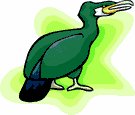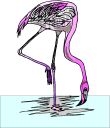
Worksheets and No Prep Teaching Resources
Reading Comprehension Worksheets
Animal Themes
Endangered Animals Theme Unit
Birds

Animal Themes
 Worksheets and No Prep Teaching Resources Reading Comprehension Worksheets Animal Themes Endangered Animals Theme Unit Birds |
 Animal Themes |
| edHelper's suggested reading level: | grades 7 to 10 | |
| Flesch-Kincaid grade level: | 9.5 |
| Flightless Cormorants |

|
 1 There are many flightless birds in the world. Ostriches, emus, cassowaries, kiwis, and penguins are all examples of bird species that have lost their ability to glide across the sky. Even though these birds cannot fly, they do have wings fully covered with feathers. The lack of this common feature is what makes the flightless cormorant so unique!
1 There are many flightless birds in the world. Ostriches, emus, cassowaries, kiwis, and penguins are all examples of bird species that have lost their ability to glide across the sky. Even though these birds cannot fly, they do have wings fully covered with feathers. The lack of this common feature is what makes the flightless cormorant so unique! |
Create Weekly Reading Books
Prepare for an entire week at once! |
| Leave your feedback on Flightless Cormorants (use this link if you found an error in the story) |
 |
Animal Themes
|
 |
Endangered Animals Theme Unit
|
 |
Birds
|
|
|